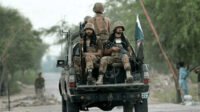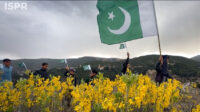A particular challenge and danger to global security and protection are nuclear weapons. What distinguishes nuclear weapons from all others is their devastating ability, which goes beyond the intended aims; these weapons are sui generis. Such weapons are inhumane both in terms of their extent of destruction which cannot be defined as having proportional forces and in the remaining effects of nuclear contamination, which is similar to the impact of toxic weapons by some scholars.
What is Nuclear Ban Treaty?
The Treaty on the Prohibition of Nuclear Weapons (TPNW), or the Treaty on the Banning of Nuclear Weapons or the Nuclear Ban Treaty, is the first legally binding international agreement to fully prohibit nuclear weapons with the ultimate aim of eliminating them. It was introduced on 7 July 2017 and opened on 20 September 2017 for signing and came into force on 22 January 2021.
Signatory States:
A total of 197 Participating Countries, including 193 Member States of the United Nations, the Cook Islands, the Holy See, the State of Palestine and Niue, may become parties to this Nuclear Weapons Ban Treaty. Since March 2021 54 countries, most recently Comoros in February 2021, ratified or joined this Treaty.
The context of the treaty on the Prohibition of Nuclear Weapons (TPNW):
Preamble: This Treaty contains a preamble of 24 paragraphs that acknowledges both the disastrous humanitarian implications of using nuclear weapons and the importance of existing international agreements on disarmament, including the NPT, CTBT and nuclear-weapons-free zone agreements and the right to peaceful nuclear power uses of states parties.
Prohibitions (Article 1): States- Parties shall not use, threaten or assist in any prohibited activity, or in using, developing, producing or manufacturing, purchasing, owning, storing, transferring or staging nuclear weapons.
Declarations (Article 2): When entering the Treaty, the state party must announce whether they have abolished a previous programme in the area of nuclear weapons, currently have nuclear arms or are keeping nuclear weapons on the territory of another nation. If a state has nuclear weapons from another nation in its territory, it must withdraw them when it signs the treaty. It must destroy them if it has its own nuclear weapons.
Safeguards (Article 3): Non-nuclear armed states shall at a minimum have a comprehensive security arrangement, “no prejudice” to future additional arrangements, with the International Atomic Energy Agency (IAEA).
Ratification of nuclear arms states (Article 4): A Nuclear State may join the Treaty in two ways, namely by joining the Treaty and then destroying its nuclear weapons or by destroying its Nuclear Weapons. States which “destroy and enter” are required to cooperate with a treaty-designated “competent foreign authority” to monitor demolition. States which “enter and destroy” must withdraw nuclear weapons immediately from operational status and apply their timetable for destruction within sixty days of their accession to the Treaty. It does not clearly state, but the Treaty requires a suitable authority to be designated at a later date, that “competent of the international authority” will be suitable for verifying the permanent disarmament of the nuclear-armed state that decides to join the Treaty. In order to reach a safeguarded agreement with the IAEA that ensures nuclear material is not transferred to peaceful arms, a treaty includes any existing or former nuclear weapons state seeking the accession of the prohibition treaty.
Positive obligations (Articles 6 and 7): The Treaty requires States parties to include victims of the use of nuclear weapons and testing and environmental remedies.
Meetings of states-parties, signature, ratification and entry into force (Articles 8, 13, 14, and 15): The implementation and other interventions will be addressed in biennial meetings of Member States. Every six years there will be review conferences. On 20 September 2017, the Treaty, open for signing, enters into force 90 days following the ratification of the 50th State.
Nuclear Weapons and International Humanitarian Law:
According to International Humanitarian Law, there are no formal prohibitions on owning, producing and using nuclear weapons in international conventions. In the 1996 advisory opinion, the International Court of Justice (ICJ) considered the question of the illegality of nuclear weapons, despite the absence of a convention.
The International Court of Justice published an advisory opinion about the legality of the use of nuclear weapons in 1996. The ICJ said in most cases the threat or use of nuclear weapons does violate international law. Warring parties may only use as much force as is needed to achieve a legitimate military objective. All Member States are obliged to negotiate and complete the task of nuclear disarmament, the court said. The Court was unable to reach a conclusion about the use of Nuclear weapons in the extreme situation when a country’s existence is threatened.
What does the nuclear ban treaty make illegal?
The Treaty on the Prohibition of Nuclear Weapons, or the Treaty as it has become officially known, prohibits the use, danger of nuclear weapons being used, developed, tested, manufactured, acquired, owned and/or stocked. It also makes it illegal, in any way, for anyone to participate in activities prohibited under the Treaty to support, promote or induce anyone. Since 22 January 2021, for the 51 ratification or accession States, the Treaty shall be legally binding, and other States may in future bind on its accession. The Treaty is the first international law instrument to reduce the devastating humanitarian effects of nuclear weapons use and testing, particularly by requiring States to assist victims of nuclear testing and nuclear use and clearance areas. It makes clear in law that States like Civil Society have a firm international consensus that all use of nuclear weapons is illegal irrespective of its justification. The TPNW sends out a strong signal that such use is not only immoral from moral and humane perspectives but also unlawful under international humanitarian law by banning specifically and unequivocally the use of nuclear weapons (IHL).
Conclusion:
The Nuclear Test Ban treaty, which is recently entered into force in January 2021 and it is ratified by more than 50 states in the world but the main nuclear weapons states did not sign it nor ratified it. And it is also considered illegal according to international law as there is no formal statement about the prohibition and usage of nuclear weapons. And the treaties are only applied to the parties which are signatories of respective treaties, if some states did not sign it then the rules of the respective treaty are not applicable to the state. So this is the point that is mainly making TPWT illegal according to international law.
Bibliography:
- GoJIL – Goettingen Journal of International Law. Accessed April 14, 2021. https://www.gojil.eu/issues/92/92_article_subritzky.pdf.
- “International Law and Nuclear Weapons – Learn About Nuclear Weapons.” Learn About Nuclear Weapons. Last modified January 5, 2016. https://laromkarnvapen.se/en/nuclear-weapons-politics/international-law-and-nuclear-weapons/.
- “List of Parties to the Treaty on the Prohibition of Nuclear Weapons.” Wikipedia, the Free Encyclopedia. Last modified September 21, 2017. https://en.wikipedia.org/wiki/List_of_parties_to_the_Treaty_on_the_Prohibition_of_Nuclear_Weapons.
- “The Treaty on the Prohibition of Nuclear Weapons At A Glance.” Arms Control Association | The Authoritative Source on Arms Control Since 1971. Accessed April 14, 2021. https://www.armscontrol.org/factsheets/nuclearprohibition.
- “Treaty on the Prohibition of Nuclear Weapons.” Wikipedia, the Free Encyclopedia. Last modified July 8, 2016. https://en.wikipedia.org/wiki/Treaty_on_the_Prohibition_of_Nuclear_Weapons.
- “Why Does the Nuclear Ban Treaty Matter?” International Committee of the Red Cross. Last modified February 1, 2021. https://www.icrc.org/en/document/why-nuclear-ban-treaty-matters.






